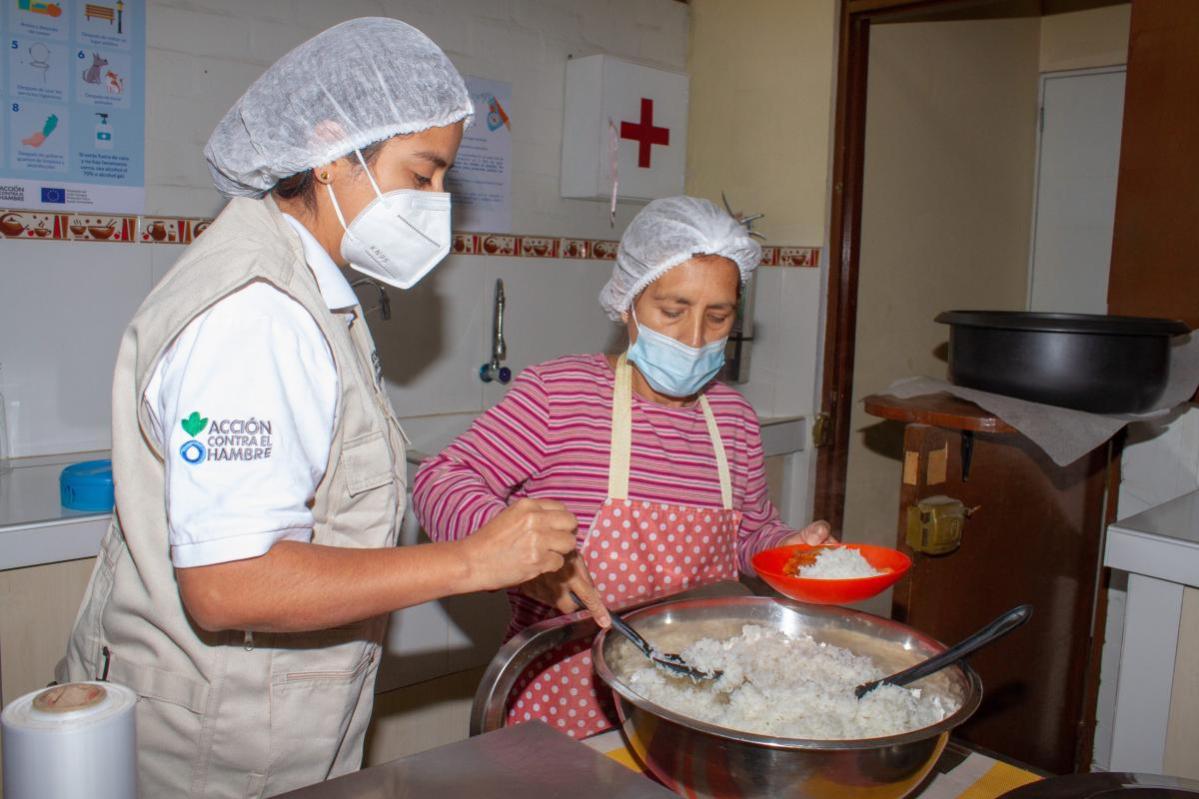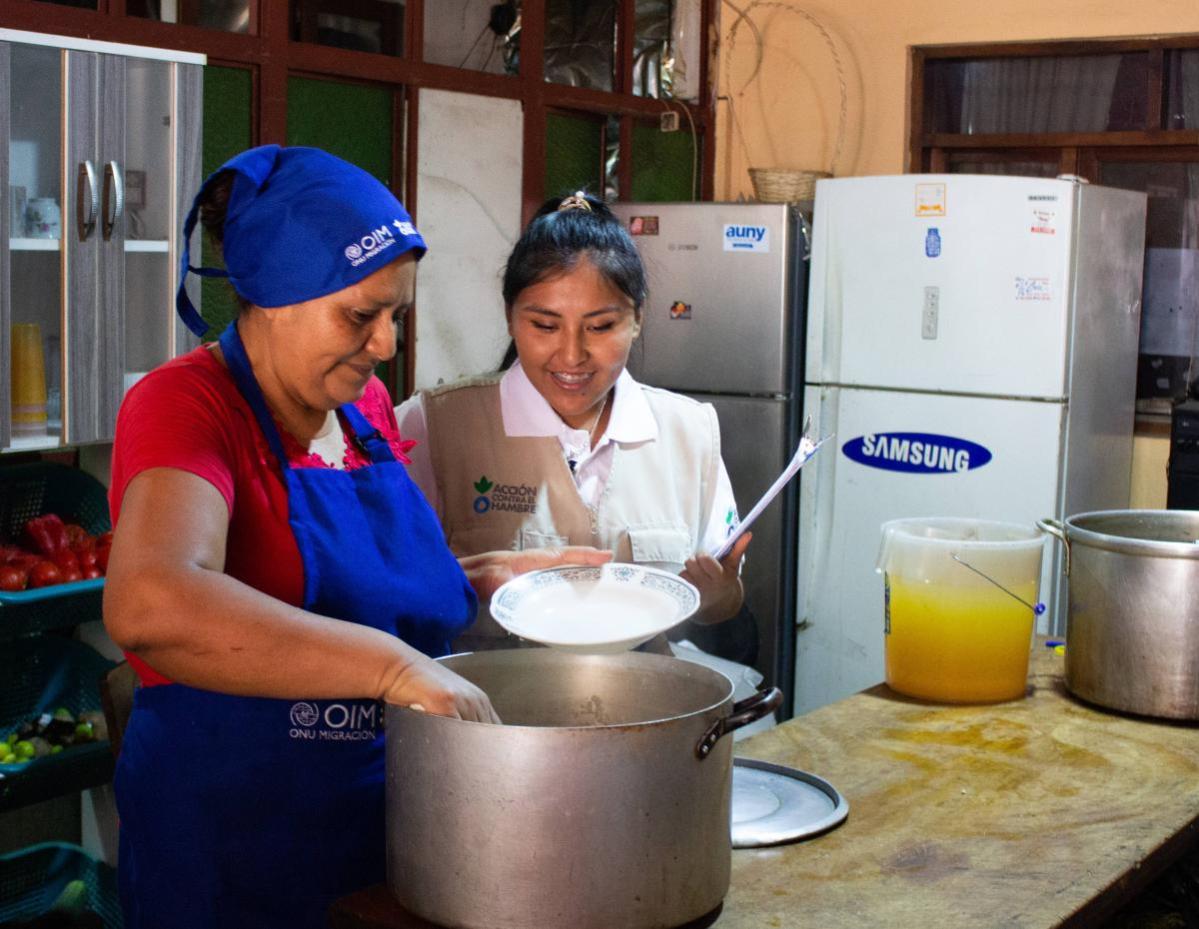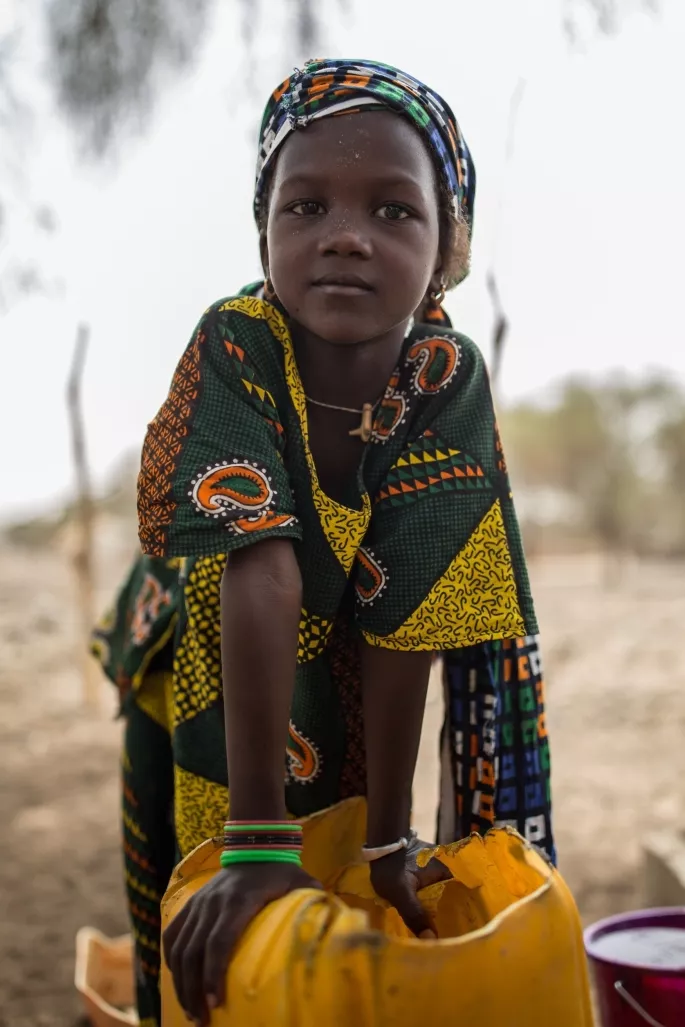Community kitchens to fight food insecurity in Peru
16.6 million people are food insecure in Peru, i.e. more than half of the population cannot access a healthy diet, according to the FAO's SOFI 2022 report. Furthermore, in Metropolitan Lima, most families, around 80%, suffer from food insecurity (moderate and severe), according to the latest report by Action Against Hunger.
Rising prices have played a clear role in this situation, forcing families, especially the most vulnerable, to change their consumption and eating habits. Specifically, food prices have increased the average cost of the basic food basket per person to 378 soles (around 92 euros), increasing the amount spent per family on food.
In a context where 12.1 per cent of the under-five population suffered from chronic malnutrition[1], Action Against Hunger addresses urgent needs to tackle the food crisis and responds to the food insecurity of the population, both national and migrant, in several ways, including supporting community kitchens.

A woman cooks with an Action Against Hunger worker during a Kitchens Management Training in East Lima © Sandro Rivera for Action Against Hunger.
These grassroots social organisations provide low-cost food to the vulnerable population. One of them is the soup kitchen Casa de la Esperanza, in Comas (Lima). Here, Carmen Elizabeth Castillo has helped build a home for dozens of Venezuelans and Peruvians. She works as the canteen's coordinator and cook with her husband and sister from Monday to Friday in order to deliver 65 daily rations of food. Her involvement is immense.
"The people who receive the aid don't think that they just go and pick up the food, but that they feel that human warmth", she explains.
Her work in the canteen began with the state of emergency caused by COVID-19 when she received help from Action Against Hunger. "It was the first institution that helped us. In the Casa de la Esperanza shelter we had the infrastructure for the dining hall, but not the staff, so I decided to take on the responsibility of coordinating it. The sheltered families themselves helped me. We started cooking for 30 people and today we serve almost 100," she recalls.
In addition to providing the canteen with fresh groceries, non-perishable food, and gas for preparing meals, Action Against Hunger trained Castillo to manage the kitchen. She learned how to handle, store and salvage food and how to plan ahead. In addition, the organisation trained her to detect malnutrition and anaemia in children.
Castillo, moved, has only words of gratitude. "I have been working with Action Against Hunger for three years now and it has been a real pleasure to have the trust they have placed in us and to serve a population in need. The canteen has been set up thanks to the financial support. Even if we didn't want to, we couldn't achieve it", she concludes.
The first to receive food are the food insecure people in the community. Eighty per cent of the people receiving food are informal workers, many of whom work with their children. They live from day to day, uncertain whether they will be able to pay their rent or pay for that day's food. Faced with this doubt, and without access to nutritious and varied food, the lunch they receive in the canteen thanks to Action Against Hunger and people like Castillo, becomes essential.

Technical supervision in the community kitchen "Dos Esquinas" © Moisés Arevalo for Acción contra el Hambre.
[1] World Health Organization (WHO), 2020.
